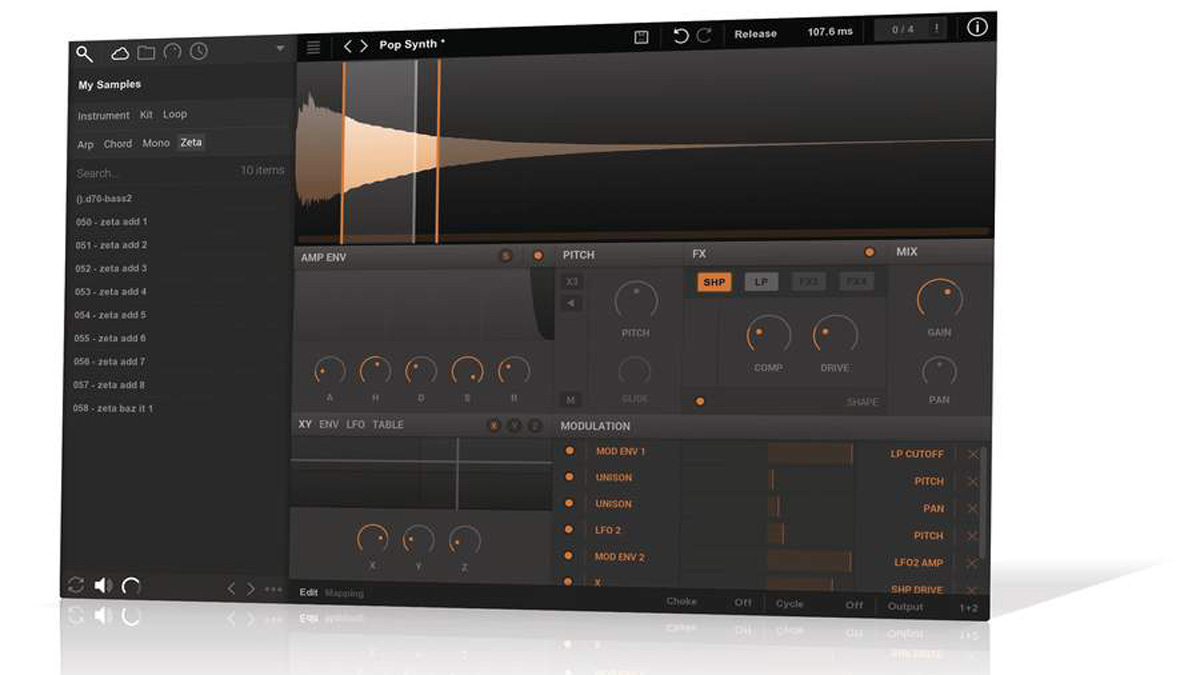MusicRadar Verdict
A nifty, capable, creative sampler for when you just want to get the essential job done with no faffing or distractions.
Pros
- +
Fast, efficient workflow.
- +
Good balance of depth and simplicity.
- +
Sample and preset tagging.
- +
Filters and FX sound great.
Cons
- -
Crossfading between Zones and Layers is quite sorely needed.
- -
Some minor interface annoyances.
MusicRadar's got your back
Scoring 4.5 on review, the original Nuance sampler sold itself on being a quick and easy alternative to the often over-powered likes of Kontakt, HALion et al. Nuance 2 (VST/AU/ standalone), and the interim 1.5 and 1.7 updates before it, bring quite a weight of new features to New Sonic Arts’ approachable instrument... but have they been worked in without compromising that defining speedy workflow?
Keep it simple
Throwing the essence of a patch together is as easy in Nuance 2 as it was in v1. Drag in as many samples as you like (or a complete preset saved out in Nuance’s proprietary sample-bundling file format), pull their horizontal and vertical edges around in the familiar Mapping view to set key and velocity ranges and layering, and adjust start/end points, fades and looping in the wave editor. The Pad View, introduced in v1.5, presents a drum-friendly mapping and triggering alternative, comprising a grid of 16 pads, covering 16 consecutive notes. The only visual feedback they give, however, is a change of tint when samples are loaded - there’s no option to name or colour them, which is disappointing.
You can assign Samples to an unlimited number of Groups for collective editing of Pitch, Pan, Volume, FX and modulation, and multiple Groups or Layers can now be selected and edited together. Groups are also assignable to Cycle Groups for round robin triggering. This is only sequential, though, with no random option.
Introduced with Nuance 1.7, PatchCloud was originally a system for tagging and browsing the factory library, and buying and downloading official add-ons to it. All of that’s still in place, of course, but now it also offers tagging and searching (by name only, not properties of any kind) of your local sample and preset libraries.
Drag as many folders of samples into PatchCloud as you like to populate it almost instantly with their contents. Right-click a single sample or multi-selection and select Edit to open a hierarchical tag editor, drilling down through Type, Category, SubCategory and Tag. A number of suggestions are already in place (‘Keys’, ‘SFX’, ‘Wood’, etc) and you can create as many new tags at each level as you like. Active tags appear at the top of the PatchCloud panel, and selecting them filters the sample list down to only the sounds with those tags assigned. It’s a straightforward setup and a useful utility.
Modulation has always been one of Nuance’s strong points, and the additions made in this department with v2 are the most transformative part of the update. An intuitive mod matrix still makes light work of assigning sources to pitch, pan, volume, FX settings and so on, but now those sources are considerably more numerous, adding three step sequencers and an XY pad to the existing envelopes and LFOs (of which there are now three apiece), MIDI messages, randomisers and the Unison modulator.
The step sequencers (called Table Sequencers) each offer two to 16 steps, at rates from 1/1 to 1/64, with the value of each step set by the height of its vertical bar. The XY Pad enables independent assignment and automation of its X and Y axis sources and - oddly - a third Z source, controlled only by a knob. The two new modulators couldn’t be easier to use, and on top of that, the very welcome addition of drag-and-drop assignment of sources to targets gives the whole modulation system a workflow boost, too.
Joining the filter, compressor, digital distortion, AM and Frequency Shifter modules in the four-slot FX section, the new Chorus and FM processors bring very usable pitch-based thickening and ‘metalizing’ to the party.
Finally, also new are SoundFont export, drag and drop of samples to your DAW or operating system, and assignment of MIDI CCs and automation IDs to knobs by right-clicking.
Nu’ balance
Nuance 2’s upgrades successfully expand its functional scope without impacting on the central remit of delivering high-quality sampling in a slick, fast-moving package. Zone and Layer crossfades are at the top of our wishlist, but as it stands, Nuance 2 is a hugely compelling sampler for seasoned producers and novices alike.
Computer Music magazine is the world’s best selling publication dedicated solely to making great music with your Mac or PC computer. Each issue it brings its lucky readers the best in cutting-edge tutorials, need-to-know, expert software reviews and even all the tools you actually need to make great music today, courtesy of our legendary CM Plugin Suite.

